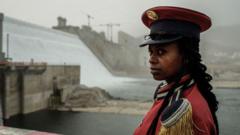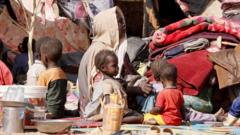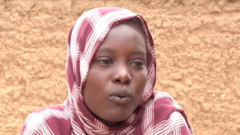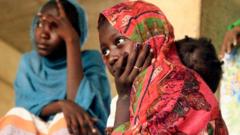With potential repercussions for water supply in Egypt and Sudan, Ethiopia's completion of the dam symbolizes both national pride and geopolitical friction.
Ethiopia Completes Construction of Controversial Nile Mega-Dam

Ethiopia Completes Construction of Controversial Nile Mega-Dam
The Grand Ethiopian Renaissance Dam aims for energy self-sufficiency amid regional tensions.
Ethiopia has announced the completion of its contentious Grand Ethiopian Renaissance Dam (GERD) on the Blue Nile, a monumental hydroelectric project that has been at the center of a heated dispute with Egypt and Sudan. Officially launched in 2011 with an estimated budget of $4 billion (£2.9 billion), the GERD stands as Africa's largest hydroelectric facility and is hailed as a significant achievement in Ethiopian development.
Prime Minister Abiy Ahmed sought to allay fears from neighboring countries, stating, "To our neighbours downstream—Egypt and Sudan—our message is clear: the Renaissance Dam is not a threat, but a shared opportunity." While Ethiopia regards the dam as critical for addressing its electricity shortfall, with approximately 60% of its population lacking stable access to power, Egypt and Sudan express concerns over potential reductions in their Nile water supplies.
Historically, the Nile is vital to both countries, with Egypt depending on it for nearly all its freshwater. Egyptian President Abdel Fattah al-Sisi and Sudan's military chief, Abdel Fattah al-Burhan, recently met to reaffirm their stance against unilateral actions regarding the Nile's management. Any decrease in water could devastate agricultural lands, potentially leading to the loss of about 200,000 acres of arable land in Egypt alone.
In a possible gesture of diplomacy, Abiy announced that Egypt and Sudan would receive invitations to the official inauguration of the dam in September. "We believe in shared progress, shared energy, and shared water," the Prime Minister emphasized, extending a hand for dialogue despite previous unsuccessful negotiations.
Despite facing international scrutiny and regional upheaval, Ethiopia remains committed to the GERD as a catalyst for national development and energy independence.
Prime Minister Abiy Ahmed sought to allay fears from neighboring countries, stating, "To our neighbours downstream—Egypt and Sudan—our message is clear: the Renaissance Dam is not a threat, but a shared opportunity." While Ethiopia regards the dam as critical for addressing its electricity shortfall, with approximately 60% of its population lacking stable access to power, Egypt and Sudan express concerns over potential reductions in their Nile water supplies.
Historically, the Nile is vital to both countries, with Egypt depending on it for nearly all its freshwater. Egyptian President Abdel Fattah al-Sisi and Sudan's military chief, Abdel Fattah al-Burhan, recently met to reaffirm their stance against unilateral actions regarding the Nile's management. Any decrease in water could devastate agricultural lands, potentially leading to the loss of about 200,000 acres of arable land in Egypt alone.
In a possible gesture of diplomacy, Abiy announced that Egypt and Sudan would receive invitations to the official inauguration of the dam in September. "We believe in shared progress, shared energy, and shared water," the Prime Minister emphasized, extending a hand for dialogue despite previous unsuccessful negotiations.
Despite facing international scrutiny and regional upheaval, Ethiopia remains committed to the GERD as a catalyst for national development and energy independence.




















